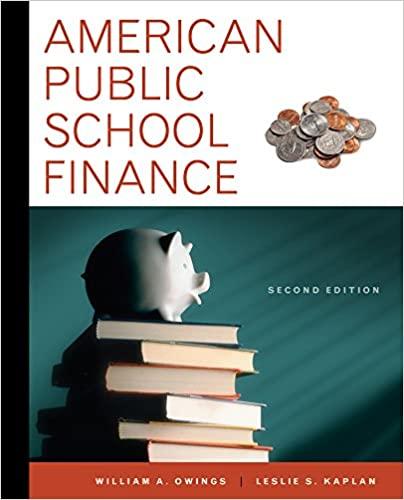Question
The World Investment Report has put Ethiopia as one of the top performing African countries in Foreign Direct Investment flow, registering a 46% increase in
The World Investment Report has put Ethiopia as one of the top performing African countries in Foreign Direct Investment flow, registering a 46% increase in 2016. In doing so, Ethiopia stood out to become one of the largest recipients of FDI in the continent posting strong and record growth (up 46 per cent to 3 billion USD) and became the second largest LDC host economy, up from the fifth position in 2015. Philip Morris International (PMI) The New York based Cigarette and Tobacco manufacturing company Philip Morris International (PMI) finds this an interesting report. As a part of business development team, you and your colleagues are responsible to evaluate a possible expansion into Ethiopia. You have identified a possible local tobacco manufacturer and negotiating a deal. The following information is available: National Tobacco Enterprise (NTE) NTE is a state owned tobacco manufacturing enterprise has a monopoly in the tobacco business. As a part of the privatization process, the Ethiopian Government is selling 40% stake in the company. PMI will pay USD 500 million for 40% stake in the company. The current spot rate is 0.036 USD/ETB. Inflation is US is projected to be on an average about 2.36% and in Ethiopia it is projected to be 15.70% for next 5 years. All the projection is for five years. The project will be finance with 50% equity investment by the parent company PMI USA and 50% debt. The USD debt is to be paid in 5 years with 5% interest. All the scheduled payments are priced at current spot rate. With the depreciation in ETB might raises FX gains and losses on the total loan payment. Due to capital restrictions, Ethiopia is considered a segmented market. The risk free rate in U.S is 3%, the US equity risk premium is 4.5%, projects beta is 1.2. Analysts also estimated the annualized standard deviation of stock return for US and Ethiopia are 12% and 36% respectively. About 100% of projects overall revenue comes from domestic sources whereas the average Ethiopian firms domestic revenue ratio is about 95%. For the parent company, the debt beta is 0.12, the equity beta is 0.77, the debt to asset is 25%. the US risk free rate is 3% and market risk premium is 4.5%. For PMI, the pre-tax cost of debt is 5%. The current price of a packet of cigarette is ETB 68 and the price will increase according to Ethiopian inflation rate. It is also expected the project will run 40% capacity in year 1, 50% in year 2, 80% in year 3, and 100% for year 4 and 5. The maximum plant capacity is 75,000,000 packets per year. The variable costs will increase by rate of inflation in Ethiopia, which is 15.70% every year. The variable costs for a packet of cigarette for the first year is ETB 20. The sales and general expenses are expected to be 15% of the total sales. Additional expenses include licensing fee paid by the subsidiary to the parent company of 2.0% of sales and increasing 1% every year after 1st year. The investment in Plant and equipment is ETB 400 million. It will be fully depreciate in 5 years. The Ethiopian government will impose an income tax of 30% on income. In addition, Ethiopia also imposes 10% withholding tax on foreign dividend payment, 5% on interest payment, licensing fees, and terminal value of the project. The US corporate tax rate is 35%. The standard practice in case of loss is zero tax for the year and carry forward the loss for tax calculation in following years. The NTE keeps 50% of net income and send remaining 50% to the parent company every year. The changes in NWC is 3% of sales revenue. The project will be terminated in Year 5. The terminal value of the project is the present value of perpetual free cashflow in the 5th year. The growth rate in cash flow is assumed to be zero. The terminal value is subject to withholding tax.
a) Estimate WACC for the project.
b) Calculate the NPV & IRR from the perspective of NTE.
c) Calculate the NPV & IRR from the perspective of PMI.
d) Should PMI accept this project? If not explain what could the parent company do?
Step by Step Solution
There are 3 Steps involved in it
Step: 1

Get Instant Access to Expert-Tailored Solutions
See step-by-step solutions with expert insights and AI powered tools for academic success
Step: 2

Step: 3

Ace Your Homework with AI
Get the answers you need in no time with our AI-driven, step-by-step assistance
Get Started


